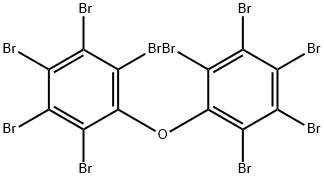3-Bromobiphenyl
- CAS NO.:2113-57-7
- Empirical Formula: C12H9Br
- Molecular Weight: 233.1
- MDL number: MFCD00000082
- EINECS: 218-304-9
- SAFETY DATA SHEET (SDS)
- Update Date: 2024-12-18 14:07:02

What is 3-Bromobiphenyl?
Chemical properties
Colorless to pale yellow liquid
The Uses of 3-Bromobiphenyl
3-Bromobiphenyl is utilized as an electrochemical immunosensor based on poly(dopamine) coated gold nanocluster for brominated flame retardants.
What are the applications of Application
3-Bromobiphenyl is an electrochemical immunosensor
Definition
T3DB: 3-Monobromobiphenyl is a polybrominated biphenyl. Polybrominated biphenyls (PBBs) are a group of 209 synthetic organic compounds with 1-10 bromine atoms attached to biphenyl. They can be used as flame retardants and may be added to the plastics used to make products like computer monitors, televisions, textiles, and plastic foams to make them difficult to burn. However, the use of PBBs is banned or restricted in most areas due to their toxicity and persistence in the environment.
Synthesis Reference(s)
The Journal of Organic Chemistry, 41, p. 24, 1976 DOI: 10.1021/jo00863a005
General Description
Clear yellow viscous liquid. Insoluble in water.
Air & Water Reactions
Insoluble in water.
Reactivity Profile
3-Bromobiphenyl may be sensitive to light. 3-Bromobiphenyl may react with oxidizing materials.
Fire Hazard
Flash point data for 3-Bromobiphenyl are not available. 3-Bromobiphenyl is probably combustible.
Toxicology
The exact mechanism of toxicty of PBBs varies depending on the specific congener. The predominant interaction is believed to involve the aryl hydrocarbon receptor (AhR). PBBs bind to and activate the AhR, which in turn initiates the transcriptional upregulation of a number of genes, affecting biochemical and endocrine pathways, cell cycle regulation, morphogenesis, oxidative stress response, and various other processes. This results in the numerous toxic responses characteristic of PBBs. Some of the known induced genes include the cytochrome P-450-dependent monooxygenases CYP1A1 and CYP1A2.
Research
3-Bromobiphenyl could be prepared by irradiation of 3,4-dibromobiphenyl (BpBr2) in acetonitrile. At present, a variety of detection methods have been developed to detect its concentration. Such as the electrochemical immunoassay of 3-BBP based on the PDOP/PB/CMK-3 platform and the multi-HRP–DHCNTs–Ab2 signal label. This detection method can detect the concentration of 3-Bromobiphenyl in the environment (This study takes river water from the estuary of the Pearl River as sample solvent)[1-2].
References
[1] Sun Z, et al. Electrochemical immunosensor based on hydrophilic
polydopamine-coated prussian blue-mesoporous carbon
for the rapid screening of 3-bromobiphenyl. Biosensors and Bioelectronics, 2014; 59: 99-105.
[2] Peter K, et al.The photochemistry of polyhaloarenes XIII. The photohydrodehalogenation of 3,4-dibromobiphenyl. Tetrahedron, 1996; 52: 8397-8406.
Properties of 3-Bromobiphenyl
| Melting point: | 93-94 °C |
| Boiling point: | 300 °C |
| Density | 1.398 g/mL at 25 °C(lit.) |
| refractive index | 1.637-1.641 |
| Flash point: | 110 °C |
| storage temp. | Keep in dark place,Sealed in dry,Room Temperature |
| solubility | Chloroform (Soluble), DMSO (Slightly) |
| form | Liquid |
| form | L |
| color | Light yellow to gray-beige |
| Water Solubility | Insoluble |
| Merck | 14,4188 |
| BRN | 2043191 |
| CAS DataBase Reference | 2113-57-7(CAS DataBase Reference) |
| NIST Chemistry Reference | 1,1'-Biphenyl, 3-bromo-(2113-57-7) |
| EPA Substance Registry System | 3-Bromobiphenyl (2113-57-7) |
Safety information for 3-Bromobiphenyl
| Signal word | Warning |
| Pictogram(s) |
 Exclamation Mark Irritant GHS07 |
| GHS Hazard Statements |
H315:Skin corrosion/irritation H319:Serious eye damage/eye irritation |
| Precautionary Statement Codes |
P264:Wash hands thoroughly after handling. P264:Wash skin thouroughly after handling. P280:Wear protective gloves/protective clothing/eye protection/face protection. |
Computed Descriptors for 3-Bromobiphenyl
| InChIKey | USYQKCQEVBFJRP-UHFFFAOYSA-N |
New Products
3-Iodophenylacetic acid 3-Pyridineacetonitrile, α-hydroxy- 2-Propanamine, 1-chloro-, hydrochloride (9CI) 3-(hexyloxy)-4-(pyridin-3-yl)-1,2,5-thiadiazole 2-Hexyn-1-ol Dibenzo-18-crown-6 Nickel(II) perchlorate hexahydrate, 98% 4-Bromophenylacetonitrile, 95% 3-Bromo-4-fluoroaniline, 97% Sodium tetraborate decahydrate, 98% Palladium(II) acetate, trimer, Pd 99% 4-Bromo-2-chlorotoluene, 97% N N Dimethylformamide Dimethyl Acetal (Dmf Dma) 2,3-Dichloro Benzoyl Cyanide [Side Chain] Bis(2-Chloroethyl) Amine Hydrochloride L-Glutamic Acid Diethyl Ester Hydrochloride 5-(Difluoromethoxy)-2-Mercaptobenzimidazole 1-Ethyl-3-(3-Dimethylaminopropyl)-Carbodiimide Hydrochloride [EDC Hcl] 1,4-Napthoquinone Bromoiodomethane Sodium Bicarbonate Methylene Dichloride (MDC) Ethyl Acetate Indole-3-Carbinol (I3C)Related products of tetrahydrofuran








You may like
-
 2113-57-7 Polydopamine 98%View Details
2113-57-7 Polydopamine 98%View Details
2113-57-7 -
 3-Bromobiphenyl, 99% CAS 2113-57-7View Details
3-Bromobiphenyl, 99% CAS 2113-57-7View Details
2113-57-7 -
 3-Bromobiphenyl CAS 2113-57-7View Details
3-Bromobiphenyl CAS 2113-57-7View Details
2113-57-7 -
 17604-74-9 3-Pyridineacetonitrile, α-hydroxy- 98+View Details
17604-74-9 3-Pyridineacetonitrile, α-hydroxy- 98+View Details
17604-74-9 -
 Cyclohexane, (2-propynyloxy)- 67967-07-1 98+View Details
Cyclohexane, (2-propynyloxy)- 67967-07-1 98+View Details
67967-07-1 -
 2-Propanamine, 1-chloro-, hydrochloride (9CI) 98+View Details
2-Propanamine, 1-chloro-, hydrochloride (9CI) 98+View Details
5968-21-8 -
 3-Iodophenylacetic acid 1878-69-9 98+View Details
3-Iodophenylacetic acid 1878-69-9 98+View Details
1878-69-9 -
 132945-75-6 (S)-1-Boc-3-methanesulfonyloxy-pyrrolidine 98+View Details
132945-75-6 (S)-1-Boc-3-methanesulfonyloxy-pyrrolidine 98+View Details
132945-75-6
